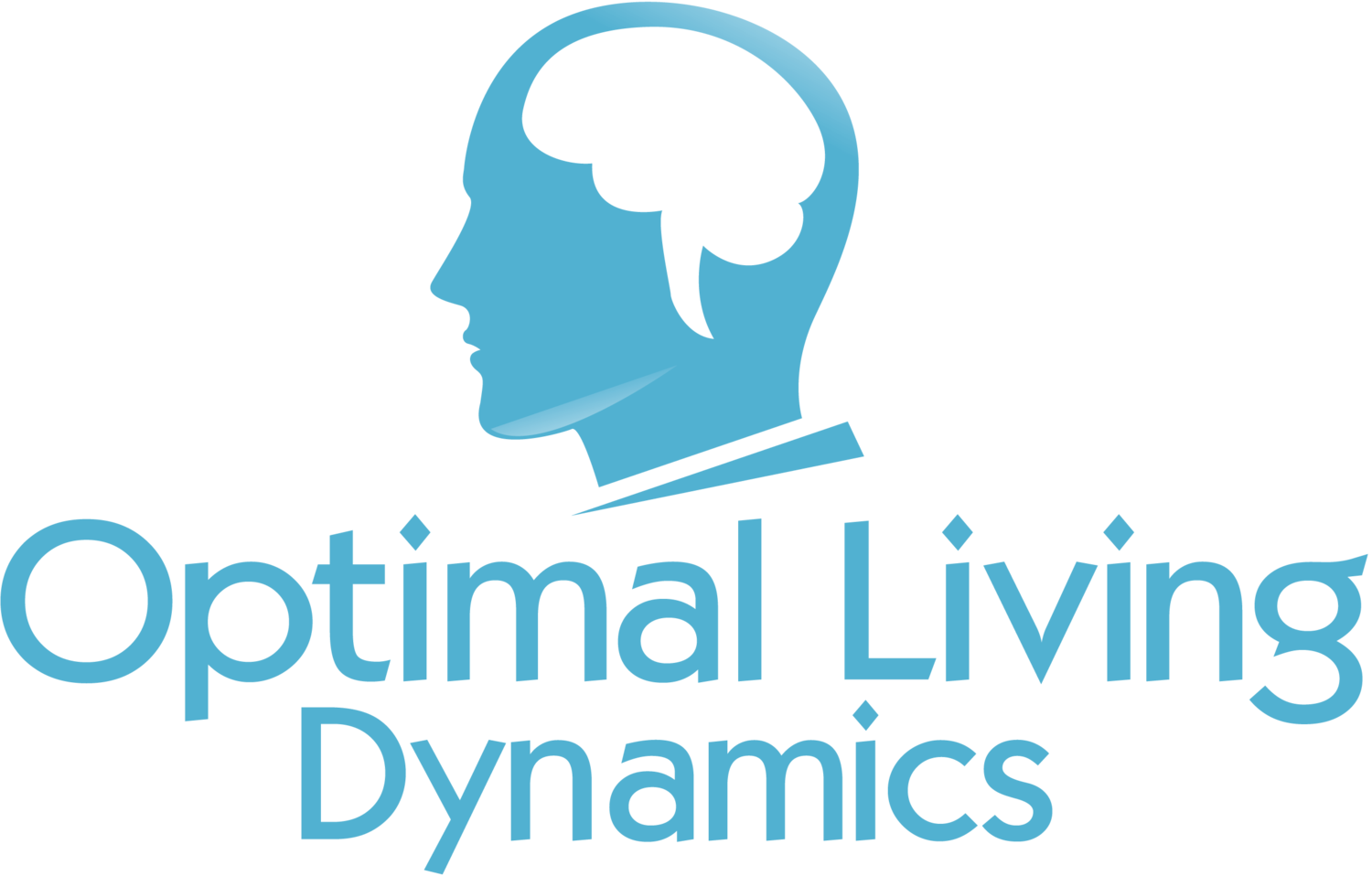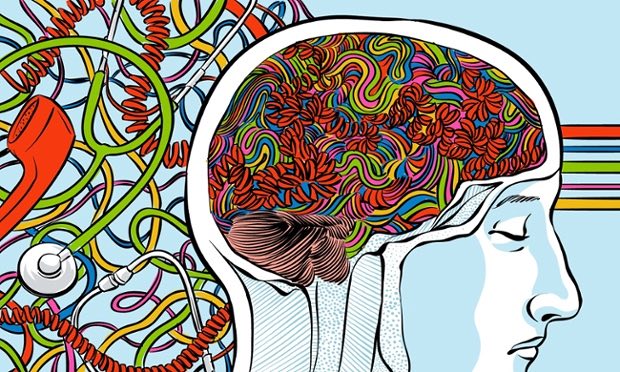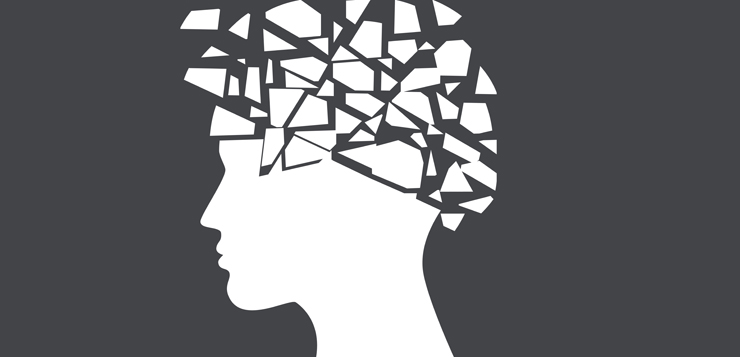Avoiding these three foods was one of the very first steps I took to improve my mental health.
I had a lot more energy, improved mood and reduced anxiety.
Unfortunately, about two months after cutting them out, I moved into a moldy house and suffered two really bad concussions. At that point, I had to look for even more advanced solutions.
But if you haven't done so already, I would strongly encourage you to try removing these three foods from your diet.
Doing so will likely improve your symptoms and calm your nervous system, making other therapies even more effective.
It’s harder to overcome trauma if you haven’t taken care of your physiology, as researchers have found that food allergies and sensitivities can trigger a wide range of emotional and mental health symptoms (110).
The problem with some foods is that they disrupt normal gut function and increase intestinal permeability (leaky gut syndrome).
When this happens, small particles of food can leak into your bloodstream. Your immune system sees these food particles as foreign entities and attacks them, increasing inflammation throughout your body and reducing the integrity of the blood-brain barrier, which can cause or worsen mental health problems (4-6, 66-67).
This is discussed in the book Gut and Psychology Syndrome: Natural Treatment for Autism, ADD/ADHD, Dyslexia, Dyspraxia, Depression, Schizophrenia by Dr. Natasha Campbell-McBride, MD.
If I eat any of these three foods by accident, I supplement with activated charcoal or bentonite clay.
Activated charcoal and bentonite clay are potent natural treatments that can trap problematic proteins, toxins and chemicals, allowing them to be flushed out of your body.
I notice I don’t feel as sick when I do this, and recover much more quickly.
Without further ado, here are three foods that I avoid as much as possible.
1. Wheat
“Gluten sensitivity can be primarily, and at times, exclusively, a neurological disease.”
Following a gluten-free diet has significantly improved my mental health (even though I didn’t have any terrible digestive issues).
I completely cut it out seven years ago, and within a few weeks, I felt so much better mentally.
I also lost a bunch of weight and my asthma disappeared.
I haven't touched it again since.
The same thing happened to Mikhaila Peterson, the daughter of University of Toronto Professor Jordan Peterson.
She followed a gluten-free diet and her depression, fatigue, irritability and memory problems faded away, allowing her to come off her antidepressants.
Dr. Peterson made the same dietary changes and was able to reduce his medication by half.
You can watch a video of them discussing it here.
Unfortunately, the myth continues to spread that only people with celiac disease need to avoid gluten-containing food. That’s simply not true.
Dr. Kenneth Fine, a pioneer in gluten intolerance research, has demonstrated that 1 in 3 Americans are gluten intolerant, and that 8 in 10 have the genes that predispose them to developing gluten intolerance (1-3).
The benefits of cutting out gluten are also discussed in this book.
So if you struggle with a cognitive or mental health condition, you owe it to yourself to follow a strict gluten-free diet for 30 days and see how you feel. You'll likely feel better.
For more than sixty years, reports in the scientific literature have linked wheat and gluten sensitivity to a variety of neurological and psychiatric conditions (75-81), including:
“A PubMed literature search (dates 1953–2011) located 162 original articles associating psychiatric and neurologic complications to celiac disease or gluten sensitivity. Thirty-six articles were located for seizure disorders, 20 articles for ataxia and cerebellar degeneration, 26 for neuropathy, 20 for schizophrenia, 14 for depression, 12 for migraine, and up to 10 articles each for anxiety disorders, attention deficit and hyperactivity disorder, autism, multiple sclerosis, myasthenia gravis, myopathy, and white matter lesions.”
Schizophrenia (39-60)
Depression (18-25)
Autism spectrum disorders (30-38)
Epilepsy and seizures (13-17)
Dementia and cognitive decline (61-63)
Anxiety (9-10)
Attention deficit hyperactivity disorder (26-27)
Cerebellar ataxia (69-72)
Social phobia (11)
Panic disorder (12)
Bipolar disorder (28)
Migraines (29)
Luckily, research shows that when people with these neurological and psychiatric disorders follow a gluten-free diet, there is a reduction in their symptoms.
Many times, there is even a complete resolution in their symptoms.
In one study, depressed patients who didn’t have digestive issues (like me) followed a gluten-free diet. Within 2-3 months, they experienced a reversal of their depressive symptoms (68).
Researchers have also found that a gluten-free diet improves depression and reduces behavioural problems by increasing levels of l-tryptophan – the precursor to the neurotransmitter serotonin (64).
Another study found a significant increase in serotonin and dopamine because of the removal of gluten (65).
Clearly, there is more to gluten than celiac disease and digestive issues, and cutting out wheat is one of the first dietary steps I recommend to people who are striving to overcome mental health challenges.
I understand that it's tough to cut out completely, but it’s worth a try because it may be all you need.
“A grain-free diet, although difficult to maintain (especially for those that need it the most), could improve the mental health of many and be a complete cure for others.”
Other than avoiding wheat, you should also avoid foods that contain barley, rye and spelt because they also contain gluten. Sauces, condiments and soups often contain it, so you should stay clear of almost all processed food. Even some medications can contain gluten.
As discussed in the GAPS Diet book, the bacteria in our guts can determine the degree to which we are sensitive to gluten (73).
So you should also try to increase the good bacteria in your gut.
And as I mentioned earlier, I take activated charcoal or bentonite clay whenever I accidentally consume wheat and it minimizes the negative effects.
2. Milk
"Milk, and all that comes from milk, increases melancholy." – Robert Burton, Anatomy of Melancholy
After childhood, many people lose the enzyme, lactase, required to digest milk.
And a lot of people who suffer from brain and mental health problems are allergic or sensitive to milk.
People are allergic or sensitive to two main components of milk – lactose and casein.
Casein is the milk protein. Lactose is the milk sugar.
Like gluten, both lactose and casein can contribute to inflammation in the body and brain, contributing to mental illness.
Research shows that people with neuropsychiatric diseases – including schizophrenia, bipolar disorder, depression, anxiety, and autism – often have significantly elevated immune reactions to casein in milk, which corresponds with the severity of their mental symptoms. And their symptoms can be “improved substantially or even been cured completely” on a dairy-free diet (82-83, 85-91).
Interestingly, casein has been shown to reduce the absorption of cysteine by 64% (92).
Cysteine is an important amino acid for mental health. I previously discussed it here.
It plays a role in the production of glutathione, your body’s master antioxidant, which protects your body from oxidative stress. And people with mental health problems often have high levels of oxidative stress (93-94).
Therefore, milk may indirectly reduce glutathione levels and increase oxidative stress by preventing the amino acid cysteine from entering cells (92).
Perhaps this is why so many people find benefit from supplementing with n-acetyl-cysteine.
Folate is another critical nutrient for mental health, and milk has been shown to decrease the transport of folate into the brain (95).
This makes sense considering that folate plays a key role in methylation, and other research has found that casein also reduces DNA methylation by 43% (96).
Lastly, researchers have also discovered that high levels of lactose in the intestines can interfere with tryptophan metabolism and serotonin levels. They concluded that lactose malabsorption may play a role in the development of depression (84).
All this being said, it seems that dairy affects everyone differently.
So you should try eliminating all conventional milk-based foods including ice cream, cheese and yogurt for 30 days. Then try adding it back in and examine how you feel.
It’s important to note that the milk in the grocery store is usually processed, homogenized, and pasteurized with distorted fats and denatured proteins. It’s not considered a whole food and I think everyone should avoid it.
My free food guide still includes grass-fed, full-fat, organic dairy because it’s a healthy whole food and plenty of people can tolerate it just fine.
I personally choose not to eat any milk or dairy though because I still feel better without it.
In conclusion, here is Dr. Daniel Kalish’s take on dairy. He is the author of The Kalish Method: Healing the Body, Mapping the Mind:
“People with sub-clinical gluten intolerance need to avoid pasteurized cow’s milk products. As the villi on the intestinal lining heal from a gluten free diet, most individuals will be able to tolerate raw or unpasteurized dairy products again in nine months to a year. In other people, there will be a more or less permanent sensitivity to dairy products. However, in the initial two months of eliminating gluten, it is absolutely required to avoid all milk dairy products, because they will inflame the intestine lining just like gluten does and prevent healing.”
3. Vegetable Oil
“The increased incidence rate of major depression since 1913 may be explained by a sharp increase in the rate of omega-6 PUFAs in the diet.”
The last food you should avoid or significantly limit is refined vegetable oil, including soybean, corn, safflower, sunflower, and canola oils.
They are highly unstable and oxidize very easily.
Like gluten, vegetable oils are everywhere and hard to avoid because they’re included in most processed foods.
These oils are also predominantly made up of omega-6 fatty acids.
This is a problem because most people eat way too many omega-6 fatty acids today, and not enough omega-3 fatty acids.
Omega-6 fatty acids increase inflammation, while omega-3 fatty acids reduce inflammation.
An international panel of lipid experts says that the ideal dietary ratio of omega-6 to omega-3 is approximately 1 to 1. But these same experts estimate that the current ratio that people are consuming today is around 20 to 1 (97-101).
As I discussed before, omega-3 fatty acids can help prevent and treat mental disorders
Unfortunately, they are being outnumbered by the inflammatory omega-6 fatty acids in our food supply.
Luckily you can combat this by staying clear of vegetable oils, supplementing with krill oil, and eating wild salmon regularly.
Not doing this can lead to mental health problems.
Dr. Raymond Peat, PhD, says that the sudden increase of vegetable oils in our food supply after World War II has caused many changes in our mental health:
“In 1980, experimenters demonstrated that young rats fed milk containing soy oil incorporated the oil directly into their brain cells, and had structurally abnormal brain cells as a result.”
Studies have also found a very strong correlation between vegetable oil consumption and violent behavior, including homicide (109).
This graph shows data from one study, looking at omega-6 intake and homicide rates in five countries.
Dr. Stephan Guyenet, author of The Hungry Brain: Outsmarting the Instincts That Make Us Overeat, discusses this in more depth here.
And it’s not just violent behaviour.
There is a significant correlation between the severity of depression and the ratio of omega-6 to omega-3 fatty acids. Many researchers suggest trying to treat depression by reducing the ratio with omega-3 supplementation (106).
Other researchers have found significantly lower levels of omega-3 fatty acids in the blood of patients with depression because of their higher omega-6 fatty acid intake (107).
Too many omega-6 fatty acids have also been linked to increases in cortisol, your body’s main stress hormone (102-104).
And elevated homocysteine levels – a known risk factor for mental health problems – has been associated with excess omega-6 fatty acids (108).
I recommend checking out the Perfect Health Diet by Paul Jaminet and Shou-Ching Jaminet if you’re interested in learning more about the detrimental health effects of refined vegetable oils.
Other Possible Food Intolerances
Be aware that you may be sensitive or intolerant to other seemingly healthy foods, and if so, they should be avoided to maintain good mental health.
This is discussed in Brain Allergies: The Psychonutrient and Magnetic Connections by Dr. Willam Philpott, MD.
For example, eggs are an incredibly nutritious and healthy food, but I’m personally intolerant to the egg whites, so I throw away the whites and just eat the yolks.
It’s not a big deal though because the yolks are the healthiest part of the egg anyway.
But I originally figured this out by following an elimination diet.
You eliminate all possible food allergens and then add them back in one by one and see if you have a negative reaction.
You can learn more about it in this book.
Some of the most common food allergens that could affect your mental health include:
Eggs
Soy
Corn
Nightshade vegetables
Peanuts
Tree nuts, like walnuts, almonds, pine nuts, brazil nuts, and pecans.
Yeast
Fish
Shellfish
Sulphites
If you struggle with mental health problems, you should cut them all out for at least 2 weeks. Then add them back in one by one and see how you feel.
Eat each food a lot over the course of three days and monitor your reaction to each one. Sometimes negative symptoms can pop up a few days later.
Conclusion
Unfortunately, the role of food in the development of mental health disorders is often overlooked by conventional psychiatrists and some psychologists.
They hardly receive any training in nutrition and rarely consider food intolerances as a possible cause of mental health symptoms.
Instead, psychiatric drugs are simply prescribed, which can lead to worse gut health, more symptoms and more medications.
However, psychiatric drugs are necessary for many people. I completely understand that.
But if your mental health is failing, try eliminating gluten, dairy and refined vegetable oils and observe the effects. You may be surprised at how much better you feel.
Please share this post with anyone that might find it useful.
Let’s spread the word that there is a link between nutrition and mental health!
References:
(1) http://www.sciencedaily.com/releases/2006/10/061010022602.htm
(2) http://www.ncbi.nlm.nih.gov/pmc/articles/PMC3184556/
(3) http://onlinelibrary.wiley.com/doi/10.1111/apt.12809/full
(4) http://www.ncbi.nlm.nih.gov/pubmed/12366374
(5) http://www.ncbi.nlm.nih.gov/pubmed/19014325
(6) http://www.ncbi.nlm.nih.gov/pmc/articles/PMC1808742/
(7) https://www.eurekalert.org/pub_releases/2016-10/sh-nsl101016.php
(8) https://www.ncbi.nlm.nih.gov/pubmed/24275240
(9) https://www.ncbi.nlm.nih.gov/pubmed/11346203/
(10) https://www.ncbi.nlm.nih.gov/pubmed/20533598/
(11) https://www.ncbi.nlm.nih.gov/pubmed/18365905/
(12) https://www.ncbi.nlm.nih.gov/pubmed/12217453
(13) https://www.ncbi.nlm.nih.gov/pubmed/15489401/
(14) https://www.ncbi.nlm.nih.gov/pubmed/9548226/
(15) https://www.ncbi.nlm.nih.gov/pubmed/17122729/
(16) https://www.ncbi.nlm.nih.gov/pubmed/7842435/
(17) https://www.ncbi.nlm.nih.gov/pubmed/19244266/
(18) https://www.ncbi.nlm.nih.gov/pubmed/14716525/
(19) https://www.ncbi.nlm.nih.gov/pubmed/12217453
(20) https://www.ncbi.nlm.nih.gov/pubmed/14716525/
(21) https://www.ncbi.nlm.nih.gov/pubmed/17030405/
(22) https://www.ncbi.nlm.nih.gov/pubmed/20545470/
(23) https://www.ncbi.nlm.nih.gov/pubmed/10086676/
(24) http://onlinelibrary.wiley.com/doi/10.1111/apt.12730/abstract
(25) https://www.ncbi.nlm.nih.gov/pubmed/24689456
(26) https://www.ncbi.nlm.nih.gov/pmc/articles/PMC3184556/
(27) https://www.ncbi.nlm.nih.gov/pubmed/17085630/
(28) http://onlinelibrary.wiley.com/doi/10.1111/j.1399-5618.2011.00894.x/full
(29) https://www.ncbi.nlm.nih.gov/pubmhttps://www.ncbi.nlm.nih.gov/pubmed/12650798/d/12650798/
(30) https://www.ncbi.nlm.nih.gov/pubmed/19564647
(31) https://www.ncbi.nlm.nih.gov/pubmed/19581261/
(32) https://www.ncbi.nlm.nih.gov/pubmed/19027584/
(33) https://www.ncbi.nlm.nih.gov/pubmed/20683204/
(34) https://www.ncbi.nlm.nih.gov/pubmed/15526989/
(35) https://www.ncbi.nlm.niht
(36) https://www.ncbi.nlm.nih.gov/pubmed/20406576
(37) https://www.ncbi.nlm.nih.gov/pubmed/19664354
(38) https://www.ncbi.nlm.nih.gov/pubmed/8930054
(39) https://www.ncbi.nlm.nih.gov/pubmed/16423158/
(40) https://www.ncbi.nlm.nih.gov/pubmed/13707687/
(41) https://www.ncbi.nlm.nih.gov/pubmed/5820122/
(42) https://www.ncbi.nlm.nih.gov/pubmed/4739849/
(43) https://www.ncbi.nlm.nih.gov/pubmed/1246624/
(44) https://www.ncbi.nlm.nih.gov/pubmed/567316/
(46) https://www.ncbi.nlm.nih.gov/pubmed/707651/
(47) https://www.ncbi.nlm.nih.gov/pubmed/3524724/
(48) https://www.ncbi.nlm.nih.gov/pubmed/7270725/
(49) https://www.ncbi.nlm.nih.gov/pubmed/19494248/
(50) https://www.ncbi.nlm.nih.gov/pubmed/20471632/
(51) https://www.ncbi.nlm.nih.gov/pubmed/20884755/
(52) https://www.ncbi.nlm.nih.gov/pubmed/19748229/
(53) https://www.ncbi.nlm.nih.gov/pubmed/6192458/
(54) https://www.ncbi.nlm.nih.gov/pubmed/19748229
(56) http://www.ncbi.nlm.nih.gov/pubmed/19748229
(57) https://www.ncbi.nlm.nih.gov/pubmed/22535227
(58) http://http//onlinelibrary.wiley.com/doi/10.1111/j.1600-0447.1966.tb01920.x/abstract
(59) https://www.ncbi.nlm.nih.gov/pubmed/19494248
(60) https://www.ncbi.nlm.nih.gov/pubmed/6609726
(61) https://www.sciencedaily.com/releases/2006/10/061010022602.htm
(62) http://jamanetwork.com/journals/jamaneurology/fullarticle/792544
(63) https://www.ncbi.nlm.nih.gov/pubmed/17030661
(64) https://www.ncbi.nlm.nih.gov/pubmed/15774013/
(65) https://www.ncbi.nlm.nih.gov/pubmed/6192458/
(66) https://www.ncbi.nlm.nih.gov/pubmed/21248165
(67) https://www.ncbi.nlm.nih.gov/pubmed/23639523
(68) https://www.ncbi.nlm.nih.gov/pubmed/10086676
(69) http://brain.oxfordjournals.org/content/126/3/685.short
(70) http://brain.oxfordjournals.org/content/124/5/1013.full
(71) http://www.ncbi.nlm.nih.gov/pubmed/18787912
(72) http://jnnp.bmj.com/content/74/9/1221.full
(73) https://www.ncbi.nlm.nih.gov/pubmed/24483336
(74) http://journal.frontiersin.org/article/10.3389/fnhum.2016.00130/full
(75) https://www.ncbi.nlm.nih.gov/pmc/articles/PMC4517012/
(76) https://www.ncbi.nlm.nih.gov/pmc/articles/PMC3944951/
(77) http://jnnp.bmj.com/content/72/5/560.full
(78) https://www.hindawi.com/journals/grp/2014/293206/
(79) https://www.ncbi.nlm.nih.gov/pubmed/5900428/
(80) https://www.ncbi.nlm.nih.gov/pmc/articles/PMC3641836/
(81) https://www.ncbi.nlm.nih.gov/pmc/articles/PMC3641836/
(82) http://journal.frontiersin.org/article/10.3389/fnhum.2016.00130/full
(83) https://www.ncbi.nlm.nih.gov/pubmed/20071146
(84) https://www.ncbi.nlm.nih.gov/pubmed/9824144
(85) http://www.ncbi.nlm.nih.gov/pubmed/24313887
(86) https://www.ncbi.nlm.nih.gov/pubmed/24313887
(87) https://www.ncbi.nlm.nih.gov/pubmed/20071146
(88) https://www.ncbi.nlm.nih.gov/pubmed/21176030
(89) http://www.ncbi.nlm.nih.gov/pubmed/20406576
(90) http://www.ncbi.nlm.nih.gov/pubmed/20071146
(91) https://www.ncbi.nlm.nih.gov/pubmed/22801085
(92) https://www.ncbi.nlm.nih.gov/pubmed/25018147
(93) https://www.ncbi.nlm.nih.gov/pubmed/16410648
(94) https://www.ncbi.nlm.nih.gov/pubmed/22542447
(95) https://www.ncbi.nlm.nih.gov/pmc/articles/PMC2715943/
(96) https://www.ncbi.nlm.nih.gov/pubmed/25018147
(97) https://www.ncbi.nlm.nih.gov/pubmed/10511332/
(98) hhttps://goo.gl/ChjWh4tps://goo.gl/ChjWh4
(99) http://www.nutrasource.ca/files/omega_3_chronic_nov2006.pdf
(100) https://ods.od.nih.gov/pubs/conferences/w6w3_abstracts.html
(101) https://www.ncbi.nlm.nih.gov/pubmed/14579680/
(102) http://www.ncbhttp
(103) http://www.ncbi.nlm.nih.gov/pubmed/12442909
(104) http://www.ncbi.nlm.nih.gov/pmc/articles/PMC3081099/
(105) http://bjp.rcpsych.org/content/186/4/275
(106) https://www.ncbi.nlm.nih.gov/pubmed/8729112/
(107) http://ajcn.nutrition.org/content/62/1/1.abstract
(108) https://www.ncbi.nlm.nih.gov/pubmed/15041026/
(109) https://www.ncbi.nlm.nih.gov/pubmed/15736917




























